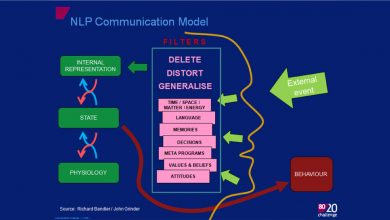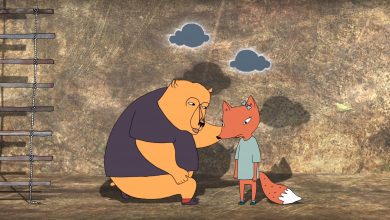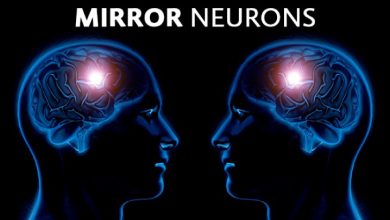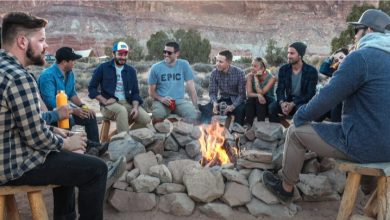Dancing with the elements
This is a dancing activity that explores how the different elements (earth, water, fire, and air) impact the way we communicate with our bodies.

Why did I choose this tool?
I participated in this session on It’s Up to Me, run by Amalia Ghiban, and it gave me a very deep and memorable relationship to body language as a trainer. Combining the music with the movements helped me see how people can be in different elemental or emotional states and how we can get better at recognizing those states in others and in ourselves just by looking at our posture, hands, eye contact, etc. It also helped me put body language into a structured framework, so that I could classify different types of body movements into a larger system and apply the framework to the contexts of being a trainer.
How does this apply to being a trainer?
As a trainer, much of our interaction with trainees and trainers is nonverbal. In the middle of a session, we often don’t have the opportunity to speak and thus have to figure out how to do so without sound. When we are able to sense one’s emotional state from the signals they are sending with their body, we are more likely to know how to engage with that person. The elements can help us quickly guess at how someone is feeling just from their body movements. For example, someone who is in the fire element is likely to be shooting their hands forward when talking, which says that this person may be feeling angry or some sort of conviction about what they’re discussing. On the other hand, someone who is in the water element is likely to sway their body back and forth, going with the flow, which says that this person may be feeling uncertain or adaptable to the current situation. This doesn’t mean this is exactly how one feels, yet it can give us a starting point for a conversation or help us make decisions in an environment where we need to act quickly.
Content
Dancing with the Elements is an activity to help us better recognize how different elemental states impact how we are nonverbally communicating with others and how they are communicating with us. It is a movement activity with music.
The elements
The first dance is earth. The earth dance is lowering our center of gravity and spreading our legs a bit wider, planting our feet strongly. It is a slow and big movement. It takes up a lot of space. It uses our arms to make our space bigger and protect that space. It is about protecting territory and being grounded.
The second dance is water. The water dance is about opening our posture and moving more like water. It rolls with the flow. It rolls off other people’s energies. It opens up the posture, where the legs are at more of an open stance, the palms facing up and opening to others.
The third dance is fire. The fire dance is fast and focused. It uses our hands like spears, slicing through the air. It marches towards a direction. It is about going strong towards what we want.
The fourth dance is air. The air dance is about being really high in the sky. It is about being up on our toes, looking at the sky, hands in the air. It is about dreaming and seeing the vision.
An example of how the elements appear differently
| Item | earth | water | fire | air |
| Center of gravity | low | middle | middle | high |
| Palms | facing down | facing up | blading, facing in | towards the sky |
| Arms | out wide | back and forth, side to side | forward | up |
| Stance | wide | open, medium | squared | narrow |
| Speed | slow | medium slow | fast | medium fast |
| Feet | rooted in the ground | soft on the ground | stomping into the ground | up on the toes |
| General feelings | Strong, solid | Loose, flexible | Angry, focused | Dreamy, hopeful |
| Eyes | down or level, panning around | wide focus, moving around | focused forward | up in the air |
Examples of the elements, body language, and being a trainer
The elements can help us quickly structure the type of body language that we’re seeing in another trainer, participant, or even in ourselves, which can give us a clue into how the person is feeling or what they want. I say give a clue because it doesn’t automatically tell us what’s going on with them, but it can give us tools to have the conversation. For example, if we see someone with their palms down and we’re hoping to convince them of a new idea, we can say, “I was hoping to talk about a new idea with you, and yet I see your palms down which might be giving me the impression now is not a good time—would now be an OK time to talk about this new idea or would you prefer another time?”
Also, after doing the dancing activity, where we practice exaggerating on the different styles of body language, we may start to feel the difference and become quite aware of how people are moving and what it might be saying. Some examples:
- A person is presenting and they are constantly pointing and blading their hands, cutting through the air—fire—suggesting to us that they’re possibly angry or fighting against something.
- A fellow trainer is standing in a meeting with his palms down (signaling earth, and maybe wanting to protect territory), which may make it difficult for us to convince him of a new idea; however, if the trainer is standing with palms up and an open-stance, then perhaps he is more in the water element and is receptive to a new idea.
- We notice that many of the participants seem to be stomping on the ground a lot at the moment and we want to run a slow reflective exercise—we may have to transition them from the fire element to the water element so they become less focused and less fast-moving.
- A pair of participants may be speaking with each other at a distance and we can’t hear what they’re saying but we can see that one person is blading their hands at the other—fire—and the other is looking up and out of the window—air—and it may mean that one person is angry and the other person is avoiding or thinking a lot.
Why do the dances?
The benefit to doing the dances is to become more aware of how the elements show up in our own movements. It is an embodied sense of knowledge that can be hard to grasp from just reading this text. After all, nonverbal communication is mostly done with many parts of the body, and the dance gives a space for us to play to see how our body parts move differently in different elements, which I strongly recommend.
Reflection Questions:
- Which dance felt the most comfortable for you?
- Which dance felt the least comfortable for you?
- What is one thing you noticed about how your hands moved differently?
- What is one thing you noticed about how your eyes moved differently?
- What is one thing you noticed about how your feet were positioned on the ground differently?
- What is one thing you noticed about your facial expressions?
- In which element do you think you normally are when you are presenting?
- In which element do you think you normally are when you are listening to someone in a meeting?
- In which element do you think you normally are when you are negotiating with someone?
- In which element do you think you normally are when you leading a reflection session?
- When running a training session, the expression of which element(s) in the participants makes you feel uncomfortable?
Exercises:
How to apply it in everyday life
- Play a song that is about 4 minutes long. Set a timer for repeating one-minute increments. For the first minute, do the dance in the earth element. When the first alarm goes, switch into the water dance. Then at the next alarm, the fire dance. And then finally, the air dance. After the song is over, reflect on how you felt differently in each dance and how those movements show up in your training.
- Do this same dance alongside a partner.
- Do this same dance with a large group.
- Cycle through the different elements while doing a different activity, such as walking.
- Do this same cycling while sitting at the computer.
- Do this same cycling while going for a run.





